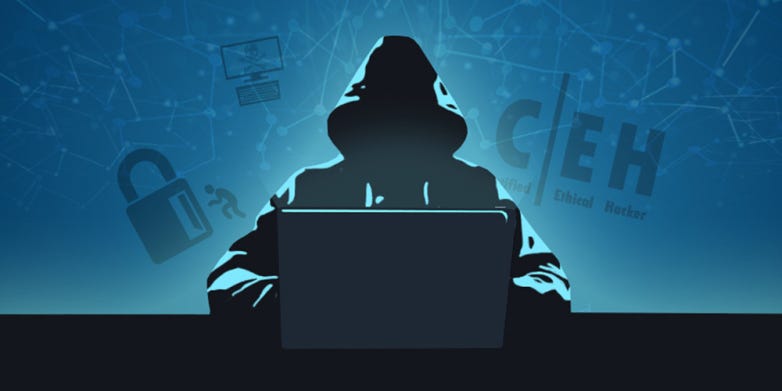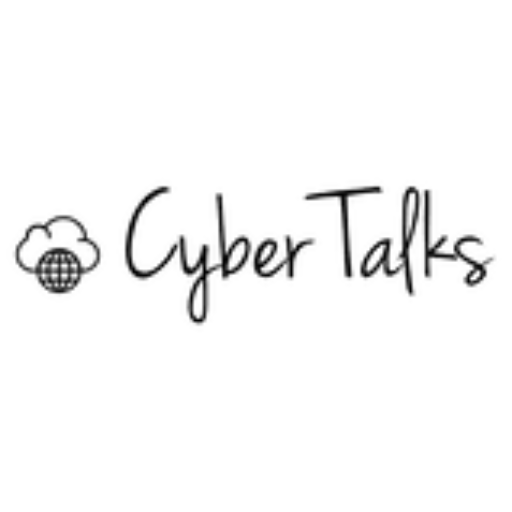
Guide To Become A Hacker!
Who Is A Hacker?
A hacker is an individual with extensive computer skills who use their technical expertise to gain unauthorized access to computer systems, networks, or data. Hackers employ various techniques and tools to exploit vulnerabilities in computer systems, often with the intention of stealing or manipulating information, disrupting operations, or causing harm.
While some hackers engage in illegal activities and pose a threat to cybersecurity, others use their skills ethically as “white hat” or “ethical hackers” to identify and fix vulnerabilities, enhancing security measures and protecting against malicious attacks.
Is Hacker Differ From Ethical Hacker?
Yes, hackers and ethical hackers differ in their intentions and actions.
A hacker, as mentioned before, is an individual who uses their technical skills to get unauthorized access to computer systems, networks, or data. Hackers may engage in illegal activities, such as stealing sensitive information, disrupting services, or causing damage to systems. Their motivations can vary, including financial gain, personal satisfaction, or malicious intent.
On the other hand, an ethical hacker, also known as a white hat hacker, follows a different path. Ethical hackers are authorized and hired by organizations to identify vulnerabilities in their systems. They use their technical skills and knowledge to actively search for weaknesses that could be exploited by malicious hackers. Ethical hackers work within legal boundaries and adhere to a code of ethics. They aim to enhance security measures, protect against cyber threats, and help organizations improve their defences.
While both hackers and ethical hackers possess similar technical skills, the key difference lies in their intentions and the legality of their actions. Ethical hackers serve as a valuable resource in safeguarding computer systems, while hackers who engage in illegal activities pose a significant threat to cybersecurity.
Hacking: A Need In Digital World
In the digital world we live in today, and hacking has become an essential component in ensuring the security and integrity of computer systems, networks, and data. Hacking, when conducted ethically and legally, serves as a crucial tool for identifying vulnerabilities and strengthening cybersecurity measures.
The rapid advancement of technology has brought forth new challenges and threats, making it imperative to have skilled individuals who can proactively identify and mitigate these risks. Ethical hackers play a vital role in this regard. By adopting the mindset and techniques of hackers, they can identify potential weaknesses in systems, networks, and software that could be exploited by malicious actors.
Ethical hacking helps organizations stay one step ahead of cybercriminals. It allows for the discovery and patching of vulnerabilities before they can be exploited, preventing data breaches, financial losses, and reputational damage. Additionally, ethical hacking promotes a culture of continuous improvement in cybersecurity practices, fostering innovation and adaptation to emerging threats.
However, it’s important to note that hacking should always be performed within legal and ethical boundaries. Unauthorized and malicious hacking activities are punishable offences that can cause significant harm. Therefore, the responsible and ethical practice of hacking is essential for the digital world to thrive securely.
Skills Needed In Ethical Hacking:
Ethical hacking, also known as perforation testing or white-hat hacking, requires a specific set of skills and knowledge to effectively identify vulnerabilities and strengthen cybersecurity. Here are ten key skills needed in ethical hacking:
Networking Fundamentals:
Understanding the fundamentals of networking is essential for ethical hackers. They need to grasp concepts such as IP addressing, TCP/IP protocols, subnetting, and routing. This knowledge helps them analyze network infrastructure and identify potential entry points.
Operating Systems:
Proficiency in various operating systems, including Windows, Linux, and macOS, is crucial. Ethical hackers must understand their inner workings, file systems, and security mechanisms to identify vulnerabilities specific to each operating system.
Programming:
Proficiency in programming languages like Python, C/C++, or Java is vital for ethical hackers. It enables them to develop custom scripts, automate tasks, and exploit vulnerabilities effectively. Knowledge of scripting languages like PowerShell or Bash is also beneficial.
Web Application Technologies:
Understanding web application technologies, such as HTML, CSS, JavaScript, and various frameworks, is necessary for ethical hackers. This allows them to identify common web application vulnerabilities like cross-site scripting (XSS), SQL injection, and insecure direct object references.
Vulnerability Assessment and Penetration Testing (VAPT):
Ethical hackers must be skilled in performing vulnerability assessments and penetration testing. They need to know how to use tools like Nessus, OpenVAS, and Burp Suite to scan systems, identify weaknesses, and exploit them to evaluate the effectiveness of security measures.
Cryptography:
Knowledge of cryptography is essential for ethical hackers to understand encryption algorithms, protocols, and cryptographic techniques. This helps them identify weaknesses in cryptographic implementations and assess the security of communication channels.
Reverse Engineering:
Proficiency in reverse engineering enables ethical hackers to analyze and understand the inner workings of software, firmware, or malware. This skill helps them identify vulnerabilities, analyze malware behaviour, and develop countermeasures.
Social Engineering:
Social engineering skills are crucial for ethical hackers to exploit human vulnerabilities and manipulate individuals into divulging sensitive information. They need to understand psychological techniques, such as phishing, pretexting, or tailgating, to assess an organization’s susceptibility to social engineering attacks.
Wireless Technologies:
Knowledge of wireless technologies, including Wi-Fi protocols, encryption standards, and wireless networks auditing tools like Aircrack-ng or Kismet, is essential. Ethical hackers should be capable of assessing wireless network security and identifying potential weaknesses.
Continuous Learning and Curiosity:
Ethical hackers must have a strong desire for continuous learning and curiosity about new technologies, attack vectors, and emerging threats. They should stay updated with the latest security trends, attend conferences, and participate in cybersecurity communities to enhance their knowledge and skills.
Certifications Needed To Become Hacker:
Techniques Used In Hacking:
Hacking involves various techniques and methods employed by individuals with malicious intent to get unauthorized access to computer systems, networks, or data. Understanding these techniques is crucial for organizations and cybersecurity professionals to strengthen their defences and protect against potential attacks. Here are fifteen common techniques used in hacking:
Phishing:
Phishing is a technique that involves sending deceptive emails or messages to trick users into revealing sensitive information, such as login information or financial details. Attackers often masquerade as trustworthy entities, such as banks or popular websites, to lure victims into clicking on malicious links or downloading contaminated attachments.
Social Engineering:
Social engineering relies on manipulating human psychology to exploit individuals and gain unauthorized access to systems. Techniques may include impersonation, pretexting, or tailgating. By exploiting human vulnerabilities, hackers can trick individuals into divulging confidential credentials or granting access to restricted areas.
Password Cracking:
Password cracking involves systematically attempting to guess or crack passwords to gain unauthorized access. Hackers use various methods, such as brute-force attacks (trying all possible combinations), dictionary attacks (using pre-existing word lists), or rainbow table attacks (using precomputed hashes), to crack passwords.
SQL Injection:
SQL injection targets websites or applications that have insecure database queries. By injecting malicious SQL code into user input fields, hackers can manipulate or extract information from databases. This technique can lead to unauthorized access, data theft, or manipulation of sensitive information.
Cross-Site Scripting (XSS):
XSS attacks exploit vulnerabilities in web applications by injecting malicious scripts into trusted websites. When unsuspecting users visit these websites, the injected scripts execute in their browsers, enabling attackers to steal sensitive information, perform unauthorized actions, or spread malware.
Denial of Service (DoS) and Distributed Denial of Service (DDoS) Attacks:
DoS and DDoS attacks aim to overwhelm a target system, network, or website, causing it to become unavailable to legitimate users. Attackers flood the target with an overwhelming volume of traffic or resource requests, leading to system crashes, slow performance, or complete unavailability.
Man-in-the-Middle (MitM) Attacks:
MitM attacks intercept communication between two parties without their knowledge. By positioning themselves between the sender and receiver, hackers can eavesdrop on or modify the communication. This technique allows attackers to steal sensitive data, inject malicious code, or manipulate communication.
Malware:
Malware refers to a malicious program designed to infiltrate systems, gain unauthorized access, or cause harm. It includes viruses, worms, Trojans, ransomware, and spyware. Attackers use various methods, such as email attachments, infected websites, or social engineering, to distribute and install malware.
Zero-Day Exploits:
Zero-day exploits target vulnerabilities in software that are unknown to the software vendor and, therefore, lack patches or fixes. Hackers discover and exploit these vulnerabilities before they are publicly known, allowing them to gain unauthorized access or execute malicious code.
Wireless Network Attacks:
Hackers exploit weaknesses in wireless networks, such as Wi-Fi, to gain unauthorized access or intercept communication. Techniques include network spoofing, packet sniffing, or cracking Wi-Fi encryption protocols. By compromising wireless networks, attackers can intercept sensitive data or launch further attacks.
Eavesdropping:
Eavesdropping involves intercepting and monitoring network traffic to capture very sensitive information, such as usernames, passwords, or financial data. Hackers use packet sniffing tools or compromised network devices to capture and analyze network traffic for valuable data.
Physical Attacks:
Physical attacks involve gaining unauthorized access to systems or data by physically tampering with hardware or infrastructure. This includes stealing or tampering with devices, gaining access to restricted areas, or extracting data directly from physical storage media.
Exploit Kits:
Exploit kits are pre-packaged tools that automate the process of discovering and exploiting vulnerabilities in software. Attackers use these kits to launch attacks on systems with known vulnerabilities, often targeting outdated or unpatched software.
Keyloggers:
Keyloggers record and monitor keystrokes made on a compromised system. They can be either software or hardware-based. By capturing keystrokes, hackers can collect login credentials, sensitive information, or other valuable data entered by the user.
Social Media Attacks:
Hackers exploit weaknesses in social media platforms to spread malware, launch phishing campaigns, or gain unauthorized access to user accounts. They may create fake profiles, distribute malicious links, or use social engineering techniques to trick users into revealing sensitive information.
Role Of Penetration Testing In Hacking:
Penetration testing plays a crucial role in ethical hacking. It involves simulating real-world attacks on computer systems, networks, or applications to identify vulnerabilities and weaknesses. By conducting controlled and authorized tests, penetration testers help organizations identify potential entry points that could be exploited by malicious hackers.
The goal is to proactively assess security measures, discover vulnerabilities, and provide recommendations to strengthen defences. Penetration testing helps organizations stay one step ahead by inscribing vulnerabilities before they can be exploited, ultimately enhancing overall cybersecurity.
Penetration Testing Methods:
Penetration testing, also known as ethical hacking, employs various methods to assess the security of computer systems, networks, or applications. Some famous and widely used penetration testing methods include:
Metasploit Framework:
Metasploit is a popular open-source framework that provides a comprehensive set of tools and exploits for penetration testing. It allows testers to simulate real-world attacks and assess vulnerabilities across different platforms and applications.
Open Web Application Security Project (OWASP) Testing Methodology:
The OWASP Testing Guide provides a structured approach for testing web applications. It covers various techniques like injection attacks, cross-site scripting (XSS), broken authentication, and insecure direct object references to identify vulnerabilities.
Burp Suite:
Burp Suite is a widely used web application security testing tool. It offers features like web scanning, proxy interception, and vulnerability scanning to identify security issues in web applications.
Nessus:
Nessus is a powerful vulnerability scanner that automates the process of identifying vulnerabilities in systems and networks. It scans for known vulnerabilities and provides detailed reports on potential weaknesses.
Social-Engineer Toolkit (SET):
The Social-Engineer Toolkit is a framework designed for social engineering attacks. It allows testers to simulate various social engineerings techniques like phishing, credential harvesting, and impersonation to evaluate an organization’s susceptibility to such attacks.
Wireshark:
Wireshark is a widely used network protocol analyzer that captures and analyzes network traffic. It helps penetration testers understand network communication, identify vulnerabilities, and detect potential security threats.
Hydra:
Hydra is a powerful password-cracking tool that supports various protocols like SSH, FTP, Telnet, and more. It can perform brute-force or dictionary attacks to crack passwords and test the strength of user credentials.
John the Ripper:
John the Ripper is a widely used password-cracking tool known for its speed and flexibility. It supports multiple password hash types and uses techniques like dictionary attacks, hybrid attacks, and brute-force to crack passwords.
Aircrack-ng:
Aircrack-ng is a collection of tools used for auditing wireless networks. It includes packet sniffing, capturing handshakes, and cracking WEP/WPA/WPA2 encryption to assess the security of wireless networks.
Cobalt Strike:
Cobalt Strike is a commercial penetration testing tool popular among security professionals. It provides a range of capabilities, including advanced post-exploitation, command-and-control (C2) infrastructure, and social engineering campaigns.
BeEF (Browser Exploitation Framework):
BeEF is a framework designed for web browser exploitation. It allows testers to exploit vulnerabilities in web browsers, conduct client-side attacks, and assess an organization’s defence against browser-based threats.
Nikto:
Nikto is an open-source web server scanner that identifies potential security vulnerabilities in web servers. It scans for misconfigurations, outdated versions, and known vulnerabilities in web server software.
PowerShell Empire:
PowerShell Empire is a powerful framework used for post-exploitation activities in Windows environments. It allows testers to simulate advanced attacks, maintain persistence, and assess the security of Windows-based systems.
Physical Intrusion Testing:
Physical intrusion testing involves attempting to gain unauthorized physical access to secure areas or systems. It assesses physical security controls, such as access controls, surveillance systems, and employee awareness.
Coding Methods For Hackers:
Coding skills play a vital role in the toolkit of a hacker or an ethical hacker. Proficiency in programming languages allows hackers to develop tools, automate tasks, exploit vulnerabilities, and conduct effective penetration testing. Here are some key aspects of coding for hackers:
Scripting Languages:
Scripting languages like Python, Ruby, or Perl are widely used by hackers due to their simplicity, flexibility, and availability of powerful libraries and frameworks. These languages allow hackers to automate tasks, build custom tools, and quickly prototype exploits.
Network Programming:
Understanding network protocols and having knowledge of programming languages like C/C++ or Python can empower hackers to develop network-related tools and exploits. Network programming helps in crafting custom packets, sniffing network traffic, and implementing low-level attacks.
Web Development:
Web development skills are valuable for hackers targeting web applications. Knowledge of HTML, CSS, JavaScript, and server-side languages like PHP or ASP.NET enables hackers to identify vulnerabilities, craft payloads, and exploit weaknesses in web applications.
Exploit Development:
Exploit development involves finding and leveraging vulnerabilities to gain unauthorized access. Proficiency in low-level programming languages like C/C++ or assembly language is crucial for writing exploits that target specific vulnerabilities in software.
Reverse Engineering:
Reverse engineering skills are essential for understanding the inner workings of software and analyzing binaries. Knowledge of computer programing languages like C/C++ and tools like IDA Pro or Ghidra helps hackers dissect and analyze code to discover vulnerabilities or develop patches.
Database Management:
Databases store critical data, making them attractive targets for hackers. Proficiency in Structured Query Language (SQL) and database management systems like MySQL or Oracle helps hackers manipulate databases, perform SQL injection attacks, and extract sensitive information.
Security Frameworks and Libraries:
Hackers leverage security frameworks and libraries to build secure applications and tools. Familiarity with frameworks like Metasploit, Scapy, or OWASP ZAP can enhance a hacker’s ability to automate tasks, test for vulnerabilities, and perform penetration testing.
Cryptography:
Understanding cryptographic principles and algorithms is crucial for hackers dealing with encryption and secure communications. Knowledge of programming languages like Python or Java and libraries like OpenSSL enables hackers to develop or break encryption algorithms.
Forensics and Log Analysis:
Hackers with coding skills can develop tools and scripts to analyze log files, perform digital forensics, and identify indicators of compromise. Proficiency in programming languages like Python and knowledge of regular expressions aid in automating analysis tasks.
Mobile Application Development:
Mobile devices are prime targets for hackers. Knowledge of programming languages like Java or Swift and familiarity with mobile development frameworks like Android Studio or Xcode enable hackers to identify vulnerabilities and exploit mobile applications.
Conclusion:
In conclusion, becoming a hacker requires a combination of technical knowledge, problem-solving skills, and a strong ethical foundation. It is a journey that involves continuous learning, staying updated with the latest technologies, and practising responsible hacking.
Developing proficiency in coding, networking, and security frameworks is essential for a hacker’s toolkit. However, it is crucial to emphasize the importance of ethical hacking, obtaining proper authorization, and using these skills to enhance cybersecurity, protect systems, and contribute positively to the digital world.



